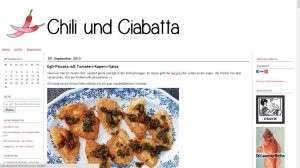Please scroll down for the English version.
Ich bin eigentlich der „point & shoot“-Kameratyp. Ich habe keine Geduld stundenlang an Kameraeinstellungen rumzuschrauben, deshalb war ich mit meiner Olympus Camedia C-300 grundsätzlich zufrieden. Als (sehr) altes Modell hat sie nur 3 Megapixel, genügend für’s Internet (ausser man will Ausschneiden). Ein wirklich grosser Nachteil ist jedoch, dass sie bei Kunstlicht sehr schlechte Resultate liefert. Da ich aber glücklicherweise im sonnigen Andalusien wohne, ist das auch nicht so schlimm. Mit folgendem Bild konnte ich sogar den dritten Preis beim Juli-DMBLGIT-Wettbewerb ergattern. Das Bild ist etwas bearbeitet, aber das ist ein anderes Thema. ;-)
Irgendwann kam der Wunsch nach einer neuen Kamera. Eine kleine handliche Kompaktkamera mit mehr Megapixeln – wobei man’s damit auch übertreiben kann,mehr Megapixel heisst nicht unbedingt bessere Qualität – habe ich ins Auge gefasst. Y. und ich fingen also an im Internet zu stöbern. Dpreview, Camera Labs und x Foodblogs wurden durchforstet. Preise verglichen, denn der Preis spielt (leider) auch eine Rolle. Schlussendlich ist es keine Kompaktkamera sonderen eine Digital Spiegelreflexkamera geworden und zwar die Nikon D60.

Nikon D60 fotografiert mit Olympus Camedia C-300
Warum eine DSLR und keine Kompaktkamera? Bei Foodfotografie – dafür habe ich die Kamera auch ausschliesslich gekauft – ist vor allem Schärfentiefe wichtig. Das bringt man mit einer DSLR am einfachsten hin. Mit den wechselbaren Objektiven hat man zusätzlich mehr Möglichkeiten. ISO-Empfindlichkeit, ist auch ein Thema, vor allem wichtig bei schlechten Lichtverhältnissen. Gewicht und Grösse, schliesslich habe ich keine Pranken, einfache Menüführung und der Preis konnten bei der Nikon D60 überzeugen. Obwohl viele vom Kauf von Kits abraten, habe ich doch ein solches gekauft. Ich habe es nicht bereut. Das Kit beinhaltet Kamera, 2 Objektive (AF-S DX Zoom-Nikkor 18–55 mm II und AF-S DX Zoom-Nikkor 55–200 mm), 2 GB Speicherkarte, Stativ und Kameratasche. Damit bin ich schon mal gut ausgerüstet. Wenn’s der Geldbeutel mal wieder zulässt kommt sicher noch eine Macrolinse dazu.
Was mich besonders an der Nikon D60 überzeugt ist die Bildqualität der geschossenen Bilder. Ich kann sie meistens unbearbeitet übernehmen, was zeitlich ein Vorteil ist. Man kann, wie sicher einige wissen, viele Stunden mit Bildverarbeitung verbringen. Etwas dass an der Kamera vermisse, ist Live View, damit fehlt einem die Möglichkeit mit ungewöhnlichen Perspektiven zu spielen, ausser man ist ein Schlangenmensch. ;-) Ebenfalls ein kleines Manko, dass man keine Profile speichern kann.
Ich habe noch viel zu lernen was Kameraeinstellungen und (Food-)Fotografie allgemein betrifft, deshalb auch der monatliche Event food-o-grafie.
Was die Nikon D60 betrifft, sie ist ein ideales DSLR-Einsteigermodell und zurzeit meine Traumkamera, eine andere wäre Perlen vor die Säue geworfen. ;-)
Technische Spezifikationen Nikon D60
Auflösung: 10,8 Millionen
Bildsensor: CCD-Sensor, 23,6 x 15,8 mm
Datei-Formate: NEF (RAW), JEPEG (verschiedene Qualitätsstufen)
ISO-Empfindlichkeit 100-1600 bzw. 3200
2.5 Zoll Bildschrim
Abmessungen (H x B x T) ca. 94 x 126 x 64 mm
Gewicht: 495 g ohne Aku, Speicherkarte und Kameradeckel
mehr
Zum Schluss möchte ich gerne einen Satz aus Ken Rockwell Website zitieren: „Nicht Kameras sind für’s Bild verantwortlich, sondern der Fotograf.“
***
English version
Honestly spoken I’m a shoot & point (camera) type. I have no nerves to adjust camera settings during hours. So I was quite happy with my Olympus Camedia C-300. Okay as old (very old) camera it has only 3.0 million pixels, what’s enough for the internet (except for cropping). A big disadvantage is the bad quality of pictures taken by artificial light. As I live in the South of Spain I have most of the year good light conditions, so I could live with that. And even I got the third place of DMBLGIT July edition. Okay the photo is edited, but this is a different story. ;-)
After all I wanted to buy a new camera. A camera mainly for food photos. I was thinking about a small,convenient and handy compact camera with more mega pixel – but not too many, because a camera with more mega pixels isn’t always better. So Y. and I began to check Dpreview, Camera Labs and many foodblogs. We compared prices etc. and ended with the Nikon D60.
Why a DSLR and not a compact camera? Depth of field is important in food photography, which you can easily achieve with a DSLR. The changeable lenses are a big advantage, too. The ISO-sensitivity is important when it comes to bad lighting conditions. Compact and lightweight body, I have small hands, intuitive menu system and the price convinced me. I read a lot about not buying a kit but I did it. The kit contains camera body, 2 lenses (AF-S DX Zoom-Nikkor 18–55 mm II und AF-S DX Zoom-Nikkor 55–200 mm), 2 GB memory card, tripod and camera bag. Perfect for me! If the budget allows (hopefully soon) I will probably by a macro lens.
What I love about the Nikon D60 are the „out of the camera“ jpg-results. I rarely have to edit photos. That’s a big time saver, you know how many hours you can spend editing photos. What I’m missing is Live View, it’s more difficult to play with unusual perspective, unless you are a contortionist. ;-) Also I’m missing the possibility to save profiles.
But all in all Nikon D60 is a very pleasant entry-level model and for me actually the camera of my dreams. I still have to learn a lot about my camera and food photography in general, that’s the reason I started the monthly event food-o-grafie.
Specifications Nikon D60
Total pixels: 10.8 million
Image sensor: 23.6 x 15.8 mm CCD sensor
ISO sensitivity: ISO 100 – 1,600 in steps of 1 EV. Can also be set to approx. 1 EV (ISO 3200 equivalent) above ISO 1600
2.5-in. monitor
Dimensions (W x H x D)Approx. 126 x 94 x 64 mm
Weight: 495 g (1 lb. 1 oz.) without battery, memory card or body cap
more
Finally I would like to quote a statment of Ken Rockwell’s website: „Cameras don’t take pictures, photographers do.“






Ja, die Schärfentiefe ist schon wesentlich. Mit einer Kompaktkamera (Lumix FX100) hat man da weniger Möglichkeiten. Also kurbeln wir die Wirtschaft an, Weihnachten naht.
PS: Trackbacks zum Event food-o-grafie funktionieren offensichtlich nicht, ich muss wohl eine e-mail schreiben.
REPLY:
Ja, bitte eine email schreiben, habe ich ja auch so in der Ankündigung verlangt. Merci.